Managing inventory used to mean endless spreadsheets and constant guesswork. You’d order too much of some products and run out of others. AI inventory management addresses these problems by automating decision-making.
AI for inventory management monitors your sales patterns and predicts what you’ll need next. It looks at your data from last month, last year, and even factors like weather or holidays. Then it tells you exactly when to reorder and how much to buy.
The software works with your existing systems. You don’t need to throw out everything and start over. AI inventory management software connects to your current setup and starts improving things right away. It catches problems before they happen and suggests solutions you might not have considered.
Small businesses save money on storage costs. Big companies avoid disappointing customers with out-of-stock items. Everyone gets better at predicting demand and making smarter purchasing decisions.
What is AI Inventory Management?
AI inventory management uses computer algorithms to track and control your stock levels automatically. The software learns from your business data to make purchasing decisions without human input.
Think of it as having an expert analyst working 24/7 on your inventory. This system processes information from multiple sources – your sales records, supplier performance, customer behavior, and market trends. It spots connections between different factors that affect demand.
The technology goes beyond simple reorder alerts. It calculates optimal stock quantities for each product based on profit margins, storage costs, and turnover rates.
AI inventory management adapts to your business changes. When you launch new products or enter different markets, the system adjusts its calculations accordingly. It learns from successes and mistakes to improve future recommendations.
Most traditional methods rely on fixed formulas or manual updates. AI systems update continuously as new sales data comes in. They respond to sudden demand spikes or supply disruptions in real time.
Why Traditional Inventory Planning Falls Short
Traditional inventory management worked fine when business moved slowly. Companies could rely on last year’s sales data and simple reorder formulas. But today’s markets change too fast for these old methods.
The limitations of traditional approaches include:
- Past data no longer predicts the future. Your sales from last December won’t tell you much about this December. Customer preferences shift overnight. New competitors appear. Social media creates sudden demand spikes that old forecasting models never see coming.
- Spreadsheets create expensive mistakes. Someone enters the wrong lead time for a supplier. Another person forgets to update seasonal patterns. These errors multiply through your entire planning process. You end up ordering too many products nobody wants or running out of bestsellers.
- No real-time visibility means constant surprises. Traditional inventory management systems update once a week or once a month. By the time you notice a trend, it’s too late to react. You’re always one step behind actual demand.
- Growing businesses outgrow simple systems fast. What worked for 100 products breaks down with 1,000 products. Manual processes that seemed manageable suddenly require full-time staff just to keep up. Decision-makers get overwhelmed trying to track everything without proper tools.
AI inventory management solves these problems by processing real-time data and adapting to market changes automatically.
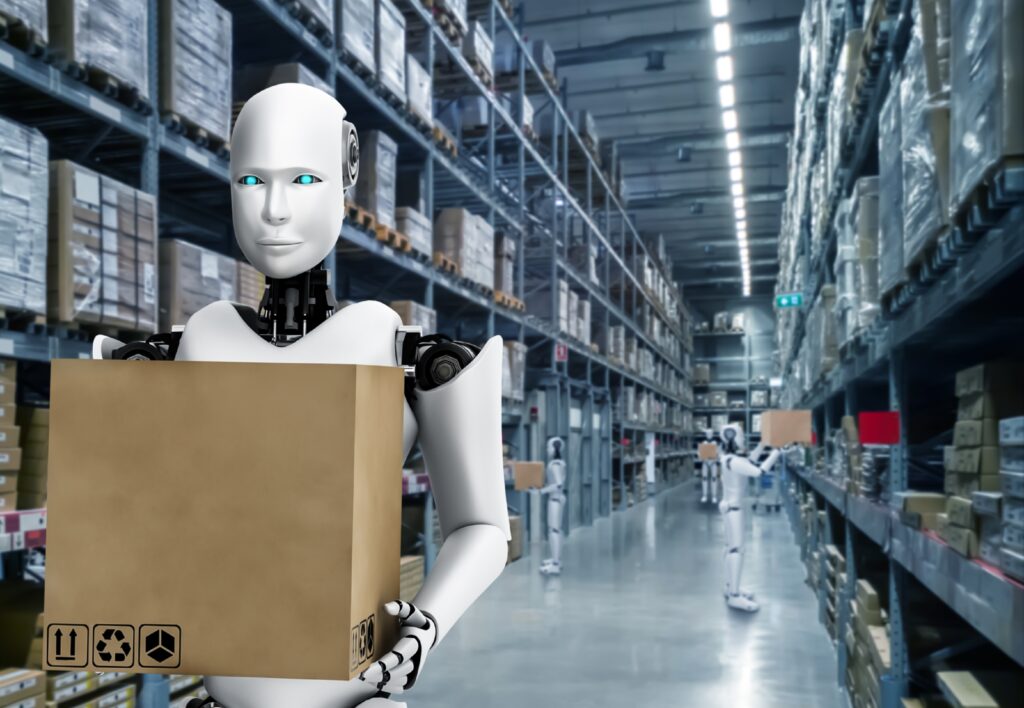
The Impact of AI on Inventory Management
Companies can no longer afford to work blindly with stocks. The market is moving too fast, and the margin remains narrow. AI inventory management completely changes the approach, turning inventory control from a reactive process into a forecast-based strategy.
The numbers tell the whole story. The global AI supply chain market can reach $21.8 billion by 2027 and it does not stop growing. Companies aren’t throwing money at AI because it sounds cool. They’re doing it because it saves serious cash and prevents costly mistakes.
Three major forces drive this shift toward AI-powered inventory management. Digital tools finally work well enough to handle complex business decisions. Customer expectations force businesses to have the right products available instantly. Supply chain disruptions showed everyone how fragile traditional planning really is.
Smart retailers want the competitive edge that AI delivers. Better demand forecasting means fewer stockouts.
Use Cases for AI in Inventory Management
AI inventory management tackles the messy reality of running a business. You know those nights when you’re wondering if you ordered enough winter coats or whether that supplier will actually deliver on time? AI can help you to solve problems. Here’s how real companies use this technology:
Demand Forecasting
Traditional forecasting means looking at last December’s sales and hoping this December goes the same way. AI-powered demand forecasting now uses advanced algorithms and machine learning to analyze great amounts of data including sales trends, seasonality, promotions, supplier performance, and even weather patterns to forecast demand with increased accuracy.
The system catches patterns that you will not notice. Maybe your umbrella sales spike whenever it rains for three days straight. Or customers buy more energy drinks during exam periods at nearby colleges. AI inventory management software spots these connections and adjusts your orders automatically. Companies typically see their forecasts get 20-30% more accurate, which means fewer angry customers and less money tied up in dead stock.
Inventory Optimization
Determining the optimal level of reserves is not just arithmetic. AI helps to make decisions by calculating the necessary volumes taking into account real demand signals, variability in order fulfilment times, transfer costs and service level targets. The system compares storage costs with the risk of customer dissatisfaction.
Your AI system considers things like whether your main supplier tends to run late in December or if competitors usually run sales that hurt your sales. It crunches these numbers constantly and adjusts your stock levels without you lifting a finger. You spend less on storage while keeping customers happy.
Automated Reordering
Nobody wants to spend their Saturday morning checking if you need more toilet paper for the office bathrooms. Automated replenishment uses AI to monitor stock levels in real time, automatically triggering orders when inventory falls below predetermined thresholds. The system watches everything and places orders when needed.
Smart reordering adapts when things change. Your usual supplier starts taking longer to deliver? The system notices and starts ordering earlier. Planning a big sale? It bumps up order quantities so you don’t run out halfway through. No more sticky notes reminding you to call vendors.
Real-Time Inventory Tracking
AI can help improve visibility into real-time inventory locations and conditions throughout the supply chain through Internet of Things (IoT) integration. Smart sensors follow your products from the supplier’s loading dock to your customer’s doorstep. You always know exactly what you have and where it sits.
This prevents the nightmare of selling something on Amazon while your last unit just sold in your physical store. When one channel sells an item, every other channel updates instantly. No more embarrassing calls to customers explaining why their order got canceled.
Returns Management
Some products come back more than others, and AI figures out why. Return prediction uses AI to foresee which products customers will likely return by analyzing historical data, customer behaviors, and product characteristics to identify patterns that signal potential return risks. Maybe that trendy jacket fits weird or the assembly instructions confuse people.
The system also handles returned items efficiently. Should you put that returned blender back on the shelf, sell it at a discount, or send it back to the manufacturer? AI weighs the costs and tells you the smartest move for each situation.
Inventory Reconciliation
Inventory numbers never match perfectly between your computer system and what’s actually on the shelves. AI inventory management helps spot these differences faster and figures out where they come from. The technology identifies patterns in discrepancies – maybe certain products always show shortages, or specific warehouse areas have counting problems.
Instead of doing massive physical counts that shut down operations, AI systems use cycle counting and statistical sampling to keep numbers accurate. The system prioritizes which items to check based on value, movement, and historical accuracy issues.
Inventory Analytics and Reporting
AI turns your pile of sales data into useful insights. It spots products that sit too long before you’re stuck with seasonal merchandise nobody wants. The technology identifies trends that show when customers stop caring about certain items. You get clear reports that help you decide what to keep selling and what to phase out.
The system generates actionable recommendations like which products deserve more shelf space or marketing investment. It shows you profit margins by product, supplier performance metrics, and inventory turnover rates that actually mean something for your business decisions.
Material Shortage Management
Supply chain problems can be a nightmare, but AI sees the shortage and when it is coming. AI systems can process external data including news reports, weather alerts, and supplier delays to predict potential disruptions in the supply chain. Hurricane heading toward your supplier’s warehouse? Port strike affecting shipping? The system alerts you before problems hit your shelves.
You can line up backup suppliers or adjust production schedules while you still have options. No more scrambling when your main supplier calls with bad news about delays or shortages.
Warehouse Automation
AI tools can use real-time data to optimize warehouse operations, including layout design and fulfillment processes by analyzing data on product sizes, demand trends and turnover rates. Your warehouse layout updates based on what actually sells instead of gut feelings about product placement.
The system tells workers the fastest route to pick orders and suggests the best spots for new inventory. Popular items move closer to the shipping area. Slow movers get tucked away in less convenient spots. Pick-and-pack times drop significantly when everything flows logically.
Dynamic Pricing
AI connects your inventory levels to your pricing strategy. Running low on a hot-selling item? The system might suggest raising prices to slow demand until you restock. Stuck with too much winter gear in March? It recommends markdowns to clear space for spring products.
The technology considers competitor pricing, demand elasticity, and profit margins when suggesting price changes.
Batch Tracking
AI systems track products with batch numbers and lots of other codes. This becomes critical during recalls or quality issues. AI can identify which customers received the products and where remaining inventory sits.
Pharmaceutical companies and food manufacturers rely on AI batch tracking to comply with safety regulations. AI automates lot rotation to ensure older batches sell first while maintaining product integrity.
Inventory Classification
AI automatically categorizes your products using ABC analysis and other classification methods. High-value, fast-moving items get different treatment than low-value, slow-moving products. The system adjusts safety stock levels, reorder frequencies, and storage priorities based on each product’s classification.
Smart classification considers profitability, demand variability, and strategic importance rather than just sales volume. Critical components that shut down production get special attention even if they don’t generate much revenue.
Seasonal Trend Analysis
AI remembers that swimsuit sales start climbing before the first warm day hits. The system considers weather forecasts, social media buzz, and past patterns to predict seasonal demand better than calendar dates alone. You stock up for summer while your competitors still think it’s winter.
Expiry Date Management
For enterprises working with perishable goods, AI tracks shelf life and automatically manages product rotation. The system ensures the sale of older products in the first place, maintaining the standards of freshness. Less waste means higher profit and customer satisfaction.
AI also predicts the optimal time for a marked-off to promote goods before their expiration date. The system balances between maximising income and minimising losses throughout the product line.
AI-powered expiry date management suggests markdown timing to move products before they expire. The system balances revenue optimization with waste reduction across your entire product line.
Inventory Risk Assessment
AI evaluates risks across your entire inventory portfolio. The system identifies products vulnerable to obsolescence, supplier concentration risks, and demand volatility issues. You get early warnings about potential problems before they hurt your bottom line.
AI takes into account such factors as the financial condition of suppliers, market trends and the actions of competitors. The system helps to make informed decisions about which products should be maintained in a constant assortment, and which require caution.
Localization Strategies
The technology analyses customer preferences in different regions for example, buyers in Phoenix choose some products and others in Portland. The system optimises product distribution taking into account local preferences, shipping costs and service requirements. Each store receives a set of goods that is ideal for its market.
Regional demand patterns, local competitors, and demographic factors influence AI-powered localization decisions. This ensures that winter coats are not sent to Florida while snow shovels reach Minnesota stores on time.
Inventory Auditing
AI optimises the processes of physical inventory management and auditing. The system identifies high-risk elements and recommends optimal check schedules, making cyclic counting more accurate and efficient.
Automated audit tracks record each transaction with the product, simplifying reporting and compliance control. The technology identifies anomalies that can signal losses, thefts or problems in processes that require investigation.
These AI inventory management applications solve real problems that keep business owners awake at night. Companies using these systems spend less time worrying about stock and more time growing their business. Each use case addresses specific pain points while contributing to overall operational efficiency and profitability.
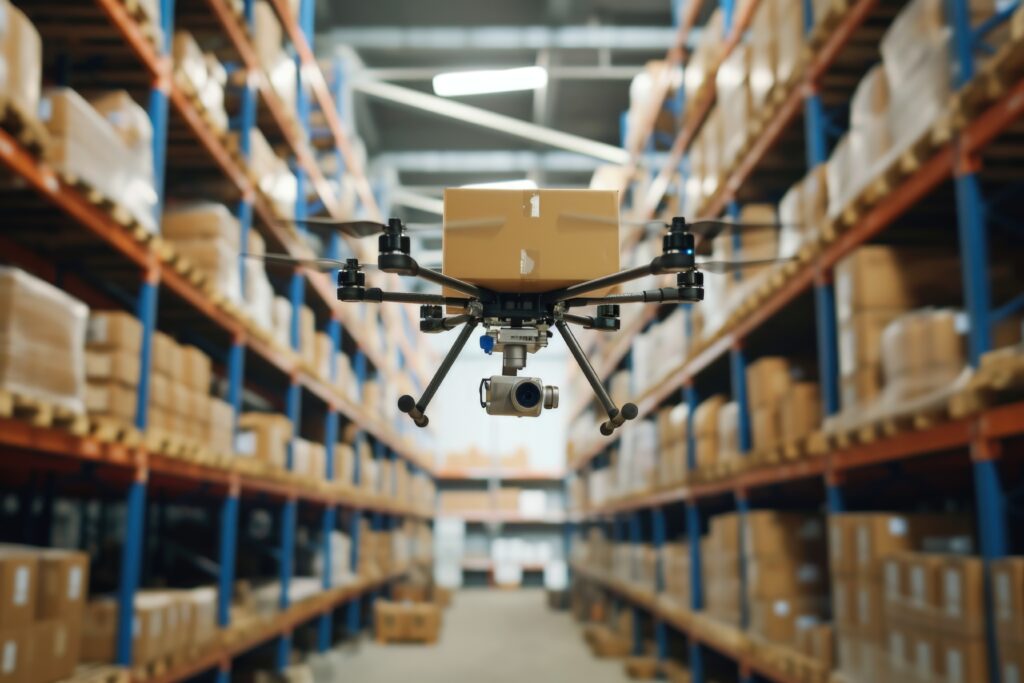
What are the Benefits of AI?
AI inventory management delivers measurable improvements that show up on your bottom line fast. Companies which use AI-powered systems see immediate changes in accuracy, costs, and customer satisfaction. Here’s what businesses actually gain:
Enhanced Accuracy
The advantages of inventory management using AI include increased accuracy, cost savings and improved customer satisfaction. Manual inventory tracking is subject to errors that accumulate over time: incorrect counting of goods, incorrect data entry into spreadsheets or forgetfulness when updating inventory levels after sales. AI inventory management software eliminates human mistakes by automatically tracking every transaction in real-time.
One of the biggest benefits of an automated inventory system is that it improves accuracy because businesses no longer have to rely on manual input. Smart sensors and barcode scanning capture precise data without human intervention. Stock levels update instantly across all sales channels when items sell or arrive from suppliers.
Significant Cost Savings
One of the reasons why businesses decide to use AI in inventory management is the potential for significant cost reduction. AI-driven inventory optimization minimizes holding costs by ensuring businesses stock the right quantity of products. You stop tying up cash in slow-moving inventory while avoiding expensive stockouts that lose sales.
AI systems calculate optimal order quantities based on actual demand patterns, supplier lead times, and storage costs. The technology prevents both overstock situations that eat storage space and understock problems that disappoint customers. Companies typically reduce inventory carrying costs by 20-30% while maintaining service levels.
Increased Efficiency
Digital inventory management takes on recurring tasks, saving the company’s time and resources. Employees no longer need to manually count goods, update tables or check moved items. AI automates these processes, allowing the team to focus on strategic business development.
AI systems show customers the exact availability of goods on the site, excluding inconvenient calls and cancellations of orders due to the lack of goods. Thanks to more accurate inventory management, orders are fulfilled faster, and customers are satisfied and more likely to return for repeat purchases.
Improved Customer Satisfaction
In the age of instant gratification fueled by Amazon Prime’s guaranteed one-day shipping, customers expect products to be available immediately when they want them. AI inventory management ensures popular products stay in stock while preventing overselling across multiple channels.
Real-time inventory tracking means customers see accurate availability on your website. No more embarrassing calls explaining why their order got canceled because you actually didn’t have the item. Better stock management leads to faster order fulfillment and happier customers who return for repeat purchases.
Enhanced Scalability
AI systems are easily adapted to the increase in inventory and changing business needs, allowing you to scale operations without losing efficiency. While traditional inventory methods often fail to add new products, warehouses or sales channels, AI effectively manages the complexity that overloads manual processes.
The technology automatically scales along with the growth of the business. The addition of new warehouses, food lines or trading platforms does not require an increase in the staff to manage additional complexity. AI adapts to changing conditions and maintains optimal performance when expanding operations.
Informed Decision-Making
AI is not limited to automating routine processes – it provides valuable information through predictive analytics, allowing companies to make informed and strategically verified decisions. Instead of assumptions about customer preferences or seasonal fluctuations, you get accurate data on the real market situation.
AI systems identify slow-moving products before they become dead stock. The technology spots trends that indicate when to discontinue items or increase marketing efforts. You make inventory decisions based on real patterns rather than hunches.
Efficient Resource Allocation
Efficient resource allocation enables companies to use resources more effectively, reduce storage costs and increase profitability. AI determines the best use of warehouse space, staff working time and working capital. Expensive goods receive priority placement, while slow-turning products occupy less costly warehouse positions.
The system also optimises related processes, such as personnel planning and interaction with suppliers. This allows resources to be channelled to where they maximise the return, instead of evenly distributing efforts across all goods.
Faster Order Fulfillment
Warehouse management with the help of artificial intelligence accelerates the collection, packaging and delivery of orders. The system forms optimal routes to reduce travel time, and intelligent algorithms select the best methods of packaging and carriers for each order. As a result, customers receive their goods faster, and operating costs are reduced.
These benefits work together to create competitive advantages that compound over time. Companies using AI inventory management spend less time fighting fires and more time growing their business. The technology pays for itself through reduced costs and improved customer retention.
Key AI Techniques for Inventory Management
Running a business means juggling dozens of inventory decisions every day. Smart companies use specific AI techniques to handle the heavy lifting so their teams can focus on bigger picture stuff.
Machine Learning for Demand Forecasting
Machine learning models analyze historical sales data, customer trends, and external factors to predict future demand with remarkable accuracy. Think of it like having a crystal ball that gets better at predictions the more you use it. Every sale teaches the system something new about your customers.
Simple SKUs with steady demand may work fine with exponential smoothing or SARIMA. High-volume, high-variability items often benefit from gradient boosting like XGBoost or ensemble models that combine multiple techniques. The software figures out which method works best for each of your products.
Computer Vision for Automated Inventory Checks
AI software can enable drones to fly autonomously through warehouses to photograph inventory stored in pallet locations. Then, they can read bar codes, text, and other information in the images and automatically compare it with what’s in the warehouse management system. No more sending people with clipboards to count everything by hand.
Regular cameras can do this too. They watch products move around your warehouse and update counts automatically. Damaged boxes or items in wrong spots get flagged right away.
Natural Language Processing for Data Analysis
NLP brings capabilities such as natural language commands, context-aware recommendations, and AI-generated workflows across modules to give users smarter, faster access to inventory insights. You can literally ask your computer “What’s running low?” like you’re talking to a person. No spreadsheet wizardry required.
Your warehouse manager doesn’t need a computer science degree to pull reports. They ask questions in normal English and get useful answers.
Reinforcement Learning for Inventory Optimization
It’s like training an experienced employee who learns from his own mistakes. The system tries different approaches to ordering and storing goods: when the method is successful, it memorises it, and in case of failure, it corrects actions. Over time, the system becomes surprisingly accurate in making the right decisions.
Predictive Analytics for Maintenance Optimization
The system carefully monitors the performance of suppliers and identifies patterns, such as regular delays in deliveries from supplier A in December or a decrease in quality at supplier B during periods of peak loads. You receive timely notifications to prevent failures in inventory management and minimise business risks.
Autonomous Mobile Robots for Warehouse Management
Picture little robot workers that never call in sick or take coffee breaks. They zip around your warehouse picking orders, moving boxes, and restocking shelves. They learn the best routes and get faster over time. Your human staff handles the thinking while robots do the heavy lifting.
Sentiment Analysis for Demand Sensing
AI improves the accuracy of orders by studying trends in social networks and customer feedback. The system analyses what people say about products on the Internet. If there is a sudden interest in a certain product, you will know that you need to increase stocks before demand increases sharply.
Multi-Echelon Inventory Optimization
If you have several stores in different cities, the technology determines the optimal number of goods for each place. It takes into account the cost of delivery, local preferences and sales speed. You no longer have to guess which warehouse needs additional winter coats.
Predictive Stock Replenishment
The smart order system takes into account not only current inventory levels, but also future sales, upcoming promotions and delivery schedules. It may offer to increase the order before a major sale or postpone the purchase if the supplier offers more favourable conditions on certain days.
Generative AI for Inventory Simulation
AI allows you to model various situations in advance without risk to the business, checking how changes in supplies or market fluctuations will affect stocks. It helps to prepare and make decisions proactively.
Maximum efficiency is achieved with an integrated approach: the system works as a team of experienced specialists, constantly optimising stocks so that customers are satisfied and profits are protected.

AI Inventory Management Across Industries
Each industry faces unique inventory management challenges. Artificial intelligence helps to solve specific problems that pose significant operational challenges, whether it’s perishable food or lack of surgical supplies in emergency situations.
Retail
Retailers can use AI technologies such as computer vision to optimize stock levels, manage seasonal demand and enhance customer experiences through better inventory tracking and warehouse management. E-commerce retailers can use AI to automate fulfillment processes, manage diverse product lines and improve order accuracy by analyzing social media trends and customer reviews.
Retail demand changes without warning. A celebrity wears your jacket on Instagram and suddenly you need 500 more units by Friday. AI spots these trends in social media chatter before your competitors catch on. Fashion retailers particularly benefit from AI that identifies which seasonal items won’t sell, allowing early markdowns instead of end-of-season clearance losses.
Manufacturing
Manufacturers can use the power of AI to plan production schedules based on optimal inventory levels and demand forecasts and help ensure efficient use of resources. They can also use AI for “just-in-time” inventory. This strategy enables organizations to forecast demand accurately so they can maintain lean inventory levels, reduce carrying costs and minimize waste.
Manufacturing requires precise coordination between suppliers and production lines. Order components too early and you tie up working capital. Order too late and production stops while workers sit idle. AI synchronizes these moving parts, ensuring materials arrive exactly when needed without excess inventory cluttering the warehouse.
Food and Beverage
Businesses in the food and beverage industry can use AI to track perishable goods, reduce waste and help ensure fresh stock availability. Restaurants can use AI to analyze historical sales data and adjust menus based on popular items and market trends, which can help them maintain sufficient stock of key ingredients.
Fresh products have a limited shelf life, and AI tracks sales priority by offering discounts or promotional prices for their quick realisation. Restaurants use such systems to predict peak periods and optimal preparation, which reduces both food waste and customer complaints about long waits.
Healthcare and Pharmaceuticals
Hospitals can use AI to manage stocks of medical supplies and equipment, reducing deficits and improving the quality of patient care. Drug manufacturers and pharmacies use AI to control complex stocks, complying with regulatory requirements and monitoring the shelf life of products.
Medical inventory mistakes have serious consequences. AI ensures critical supplies remain available while managing complex expiration dates and regulatory compliance requirements. Pharmacies rely on these systems to predict prescription demand patterns and maintain optimal stock levels without overspending on slow-moving medications.
Construction
Construction firms can use AI inventory management software to predict demand for construction materials based on project timelines, historical data and external factors, optimizing procurement and reducing delays.
Construction schedules change constantly due to weather, permits, and client modifications. AI adjusts material delivery schedules to match actual project progress rather than original plans. This prevents costly delays while avoiding expensive storage fees for materials delivered too early.
Wholesale and Distribution
Wholesalers can use AI inventory management processes to optimize inventory across multiple locations. They can also use AI to manage their large number of supplier relationships more effectively.
Wholesalers manage complex networks of suppliers, warehouses, and customers. AI determines optimal stock placement across multiple locations, balancing transportation costs against service requirements. The system coordinates shipments to minimize freight expenses while ensuring customer orders ship on time.
What are the Challenges Associated with AI Inventory Management?
Moving to AI inventory management isn’t straightforward. Companies face real problems that can sink the project if they don’t plan ahead.
Data Quality Issues
AI relies on high-quality data to produce high-quality outcomes. If the data is inaccurate, outdated or incomplete, it can lead to flawed predictions and decisions. AI systems heavily rely on data. Inaccurate, incomplete, or outdated data can lead to flawed predictions and suboptimal decision-making.
Most businesses think their data is ready for AI. They’re wrong. Product codes don’t match between systems. Sales records have gaps. Inventory counts haven’t been accurate since 2019. Organizations often have vast amounts of data stored in different systems, which can create data silos. Integrating these disparate data sources can be complex and time-consuming. You spend months fixing data problems before the AI does anything useful.
Implementation and Initial Investment Costs
The initial cost for AI technologies can be significant, including software acquisition, integration and training expenses. Implementing AI solutions can be a substantial investment. The costs include acquiring the necessary hardware and software, as well as training personnel to use and maintain the systems.
The software license is just the beginning. Add hardware upgrades, integration work, training sessions, and consultant fees. Smaller businesses may find these costs prohibitive, although there are now more accessible cloud-based AI solutions available. The bill keeps growing while you wait months to see any benefits.
Resistance to Change
Employees might be resistant to their organization adopting new technologies. Overcoming this challenge requires effective change management, communication and training. Your warehouse manager has been ordering products for twelve years. Now you want her to trust a computer? Good luck with that. People worry about losing their jobs or looking stupid in front of colleagues. When staff don’t buy in, your expensive AI system sits unused.
Integration Problems
Existing systems are often not designed to work with AI tools. Data formats do not match, APIs fail, and processes that should take two weeks are stretched for three months. At this time, the inventory team is forced to work with two systems at the same time until the integration starts working correctly.
Security and Compliance Headaches
As data dependence grows, privacy and security issues become critical. Organisations need to make sure that their AI inventory management systems comply with regulatory requirements and protect confidential information. Such systems process contracts with suppliers, price data and customer information, and any breach of security can have serious consequences. For food and pharmaceutical companies, additional regulatory requirements make decision-making even more difficult.
Finding the Right People
To effectively implement AI into inventory management, you need a specialist who understands both artificial intelligence algorithms and the specifics of supply chains. Such specialists are rare and expensive. Your IT team can be versed in technology, but not in logistics and inventory management. At the same time, the inventory team knows business processes well, but does not know how to customise and troubleshoot machine learning models.
Unrealistic Expectations
AI doesn’t solve everything overnight. The first few forecasts might miss the mark. The first automated reorder might overcompensate. That’s normal. These systems improve as they learn. Executives expect perfect forecasts from day one. When the first month’s predictions are off by 20%, they question the whole investment. AI needs time to learn your business patterns.
Companies succeed when they expect these problems and budget accordingly. The ones that fail assume AI will work perfectly from the start. Plan for delays, cost overruns, and skeptical employees. Otherwise, you’ll join the pile of abandoned AI projects.
Top 5 AI Tools for Inventory Management
Picking the right AI inventory tool can make or break your operations. Here are five proven options that actually work in real businesses.
Zoho Inventory
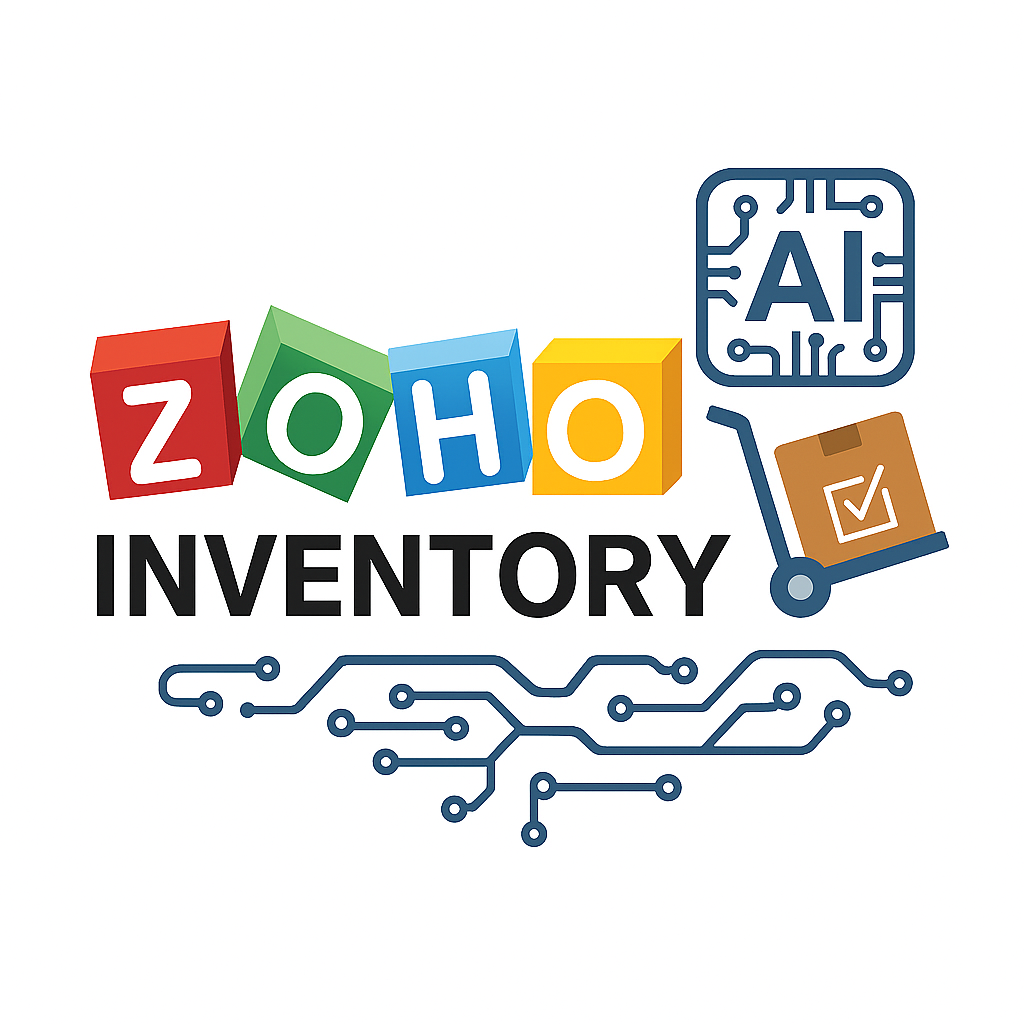
Zoho Inventory is perfect for small to midsize businesses. Use barcode and RFID systems to monitor items and track inventory accurately by batch or serial number. Receive low-stock alerts by setting reorder points, helping you stay informed and prevent stockouts.
Zoho shines when you’re already using other Zoho products. The integration between Zoho Books and Zoho Inventory eliminates double data entry. You can manage multiple warehouses, handle dropshipping, and get real-time shipping rates. The pricing stays reasonable as you grow, unlike some competitors that hit you with surprise costs.
The downside? The reporting functionalities, such as the ‘Stock Count’ report, are considered inadequate by some users. If you need detailed analytics, you might find the reports lacking.
Freshworks
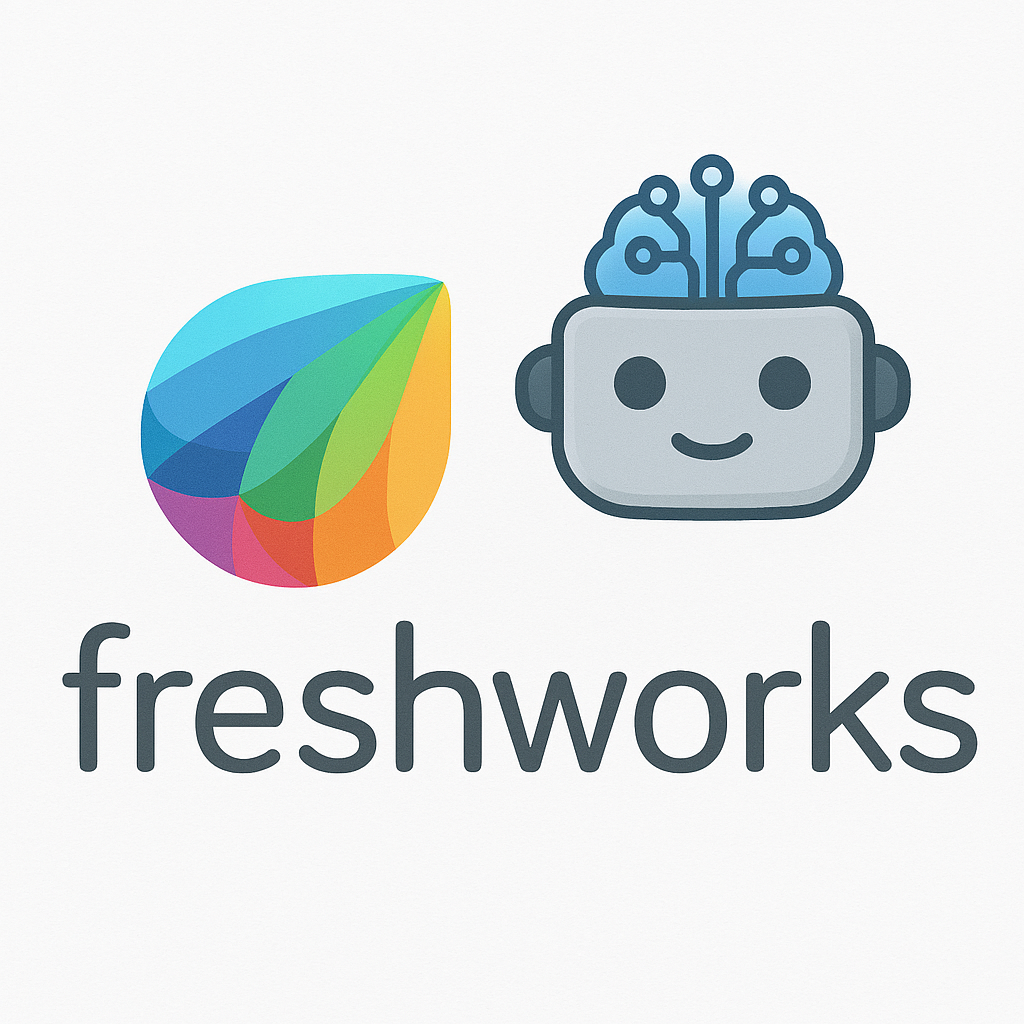
Freshworks is a modern, cloud-based, AI-powered tool designed to improve inventory management. It offers a single location for all assets, helping businesses make smart decisions regarding asset acquisition, usage, and management.
Freshworks works well for companies that prioritize customer service alongside inventory management. The mobile app lets you manage assets directly from the field. The tool’s mobile app makes managing non-IT assets directly from its Freshservice offering easy, keeping your inventory up-to-date and organized.
Llamasoft Supply Chain Guru X
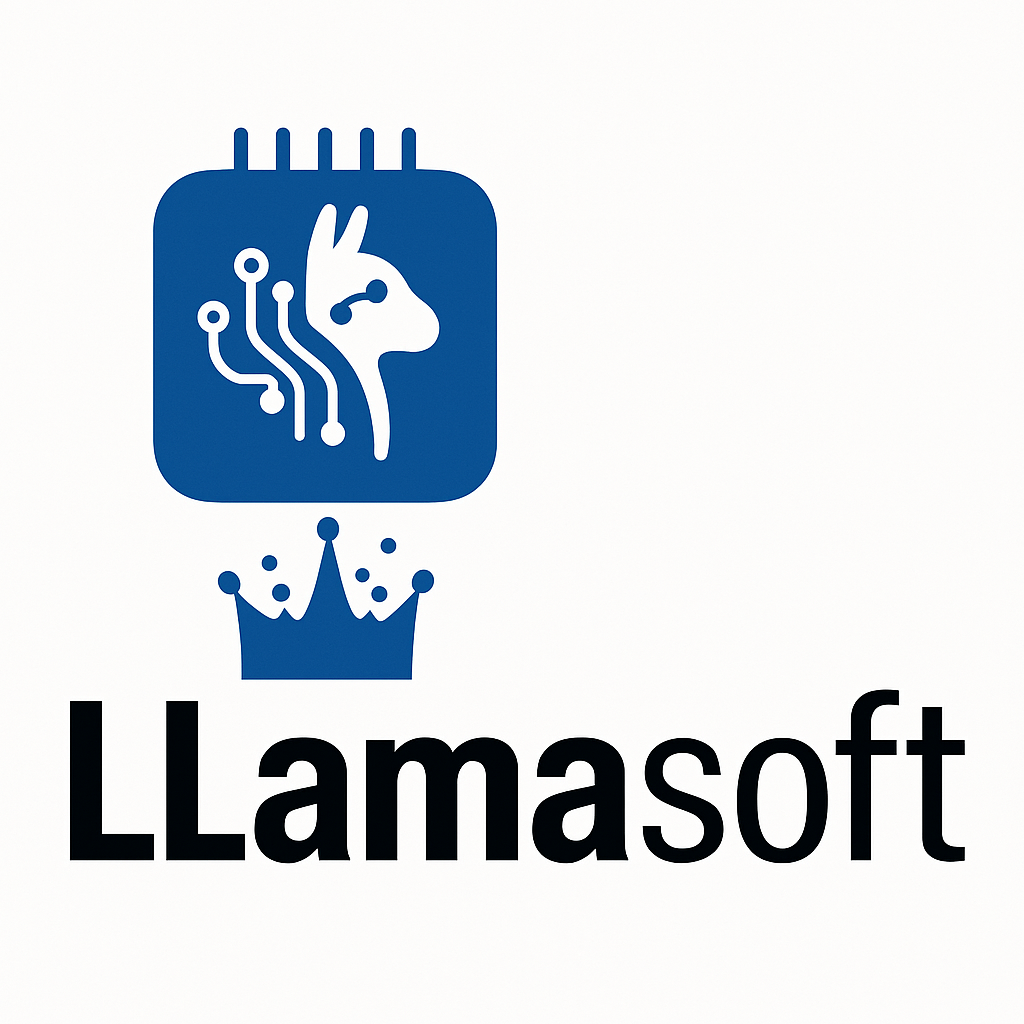
Llamasoft Supply Chain Guru X: Best for advanced supply chain analytics. This tool handles complex supply chain modeling and scenario planning. Large manufacturers use it to optimize network design and test different supplier strategies.
The learning curve is steep, and implementation takes months. Small businesses probably don’t need this level of complexity. But if you’re managing global supply chains with hundreds of suppliers, the advanced analytics pay off.
IBM Supply Chain
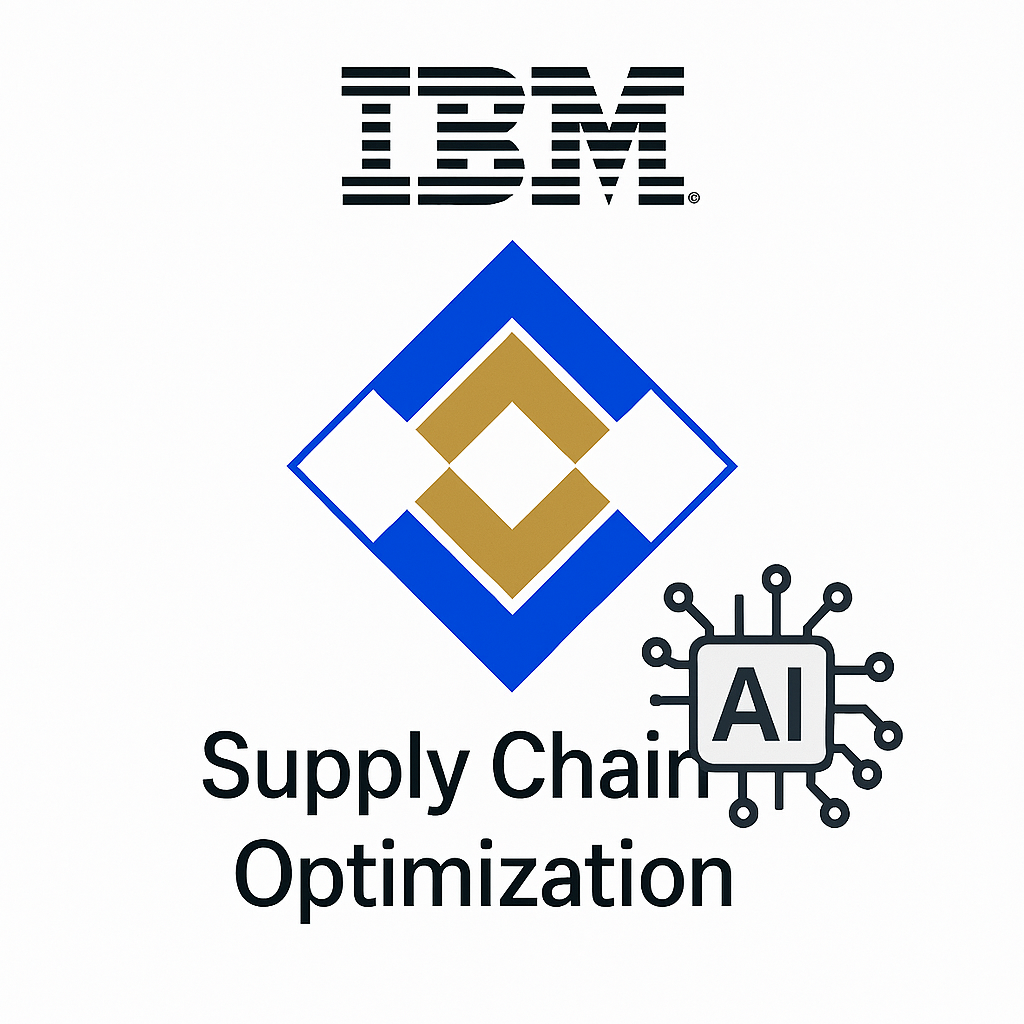
IBM Supply Chain: Best for enterprise-grade supply chain solutions. IBM brings serious AI horsepower to inventory management. The system handles massive data volumes and complex forecasting models that smaller tools can’t match.
Corporate pricing and system implementation timelines should be taken into account. It will require dedicated IT resources to manage it. However, large companies gain access to predictive analytics and integration opportunities that make these investments justified.
FourKites (Project44)
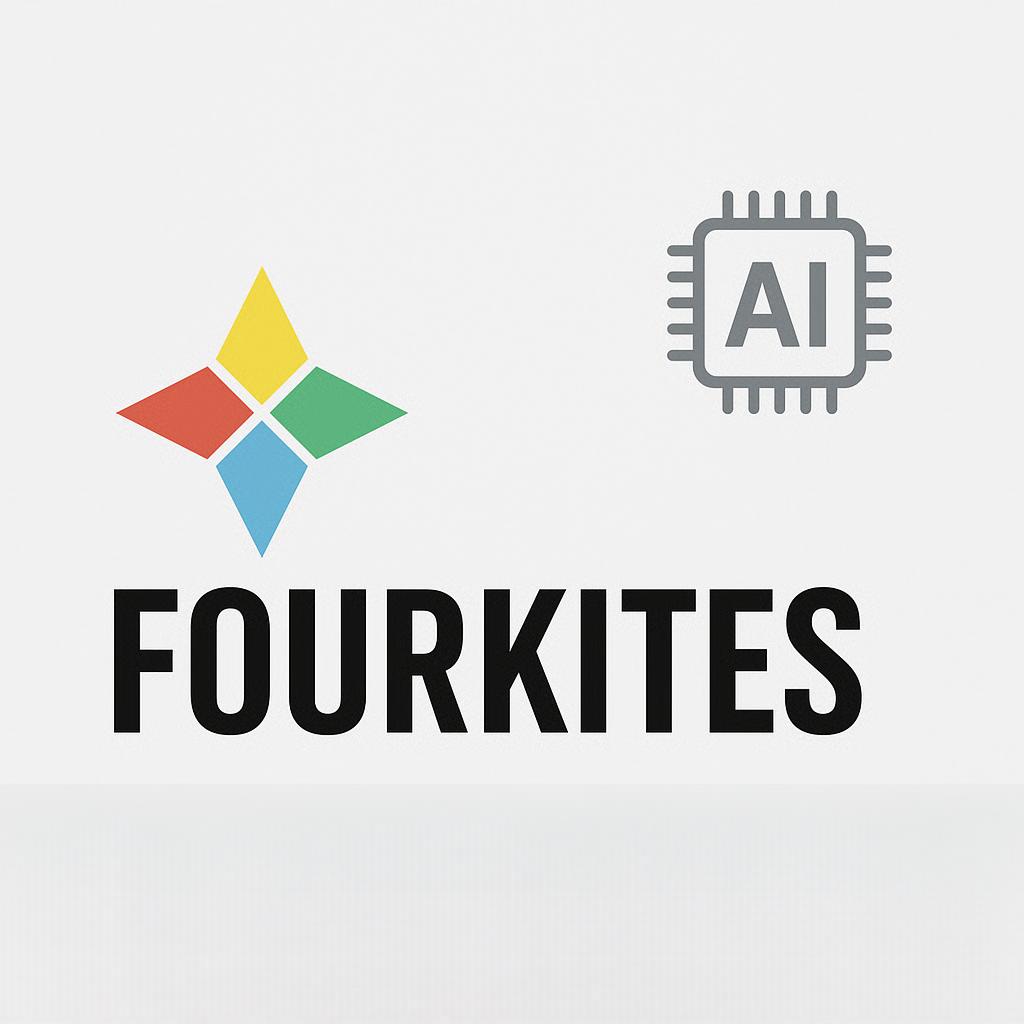
Project44: Best for real-time visibility in logistics and supply chain. FourKites specializes in tracking shipments and providing real-time updates across your supply chain. The AI predicts delivery delays before they happen.
Transportation-heavy businesses love the visibility. You can alert customers about delays and adjust inventory plans based on actual shipment data. The platform integrates with most major carriers and provides accurate delivery estimates.
Choosing the Right Tool
When evaluating AI tools for inventory management, focusing on features and capabilities that match your business needs is essential. Look for AI tools that can analyze historical sales data, market trends, and seasonality to predict future demand accurately.
Small businesses usually start with Zoho or Freshworks for their simplicity and reasonable pricing. Growing companies that need advanced analytics move to Llamasoft or IBM. Transportation-focused businesses benefit most from FourKites.
Don’t get caught up in fancy AI features you won’t use. Pick the tool that solves your biggest inventory problems first. You can always upgrade later as your needs become more complex.
Implementation of AI in an Inventory Management
Getting AI into your inventory system isn’t as complicated as it sounds, but it does require careful planning. Here’s how to do it without breaking your current operations.
Start by Finding Your Biggest Problems
First of all it would be better to understand your current inventory management processes and find out more about current challenges. Don’t try to fix everything at once. Maybe you’re constantly running out of bestsellers or stuck with seasonal items nobody wants. Pick the problem that costs you the most money.
Get Your Data House in Order
Gather relevant data from various sources. You can use sales records, purchase orders, historical data, supplier information, and other external factors. Also you can integrate this data into a centralized system for analysis. Most companies discover their data is messier than expected. Sales numbers live in one system, supplier info sits in spreadsheets, and warehouse counts exist on paper forms.
Pick the Right AI Approach
Select the appropriate AI tools which are based on your specific needs. Common AI tools used in inventory management include machine learning algorithms, predictive analytics, and NLP to analyze unstructured data. Don’t get fancy with complex algorithms if simple forecasting models solve your problem.
Build and Test Your Models
Develop AI models for your inventory management needs. For example: Demand Forecasting which uses historical sales data and other factors to forecast future demand accurately. Replenishment optimization to optimize reorder points, safety stock levels, and order quantities.
You can train AI models which use historical data and validate performance which use holdout datasets or cross-validation techniques. Continuously refine and update the models as new data becomes available. Test everything with old data first. If the AI can’t predict last year’s sales accurately, it won’t help with next month’s orders.
Connect Everything Together
Integrate the AI models with your existing inventory management systems or implement specialized inventory management software that incorporates AI capabilities. This integration step usually reveals problems nobody anticipated. Plan for delays and budget overruns.
Monitor and Adjust
Monitor the performance of the AI models in real-time and fine-tune them as needed to adapt to changing business conditions, market dynamics, and seasonal variations. AI systems need babysitting, especially during the first few months. Market conditions change, suppliers switch delivery schedules, and customer preferences shift.
Get Your Team on Board
Train users to interpret and utilize the insights generated by AI models effectively. Demonstrate the benefits of AI-driven inventory management, such as improved accuracy, reduced costs, and better decision-making, to encourage adoption. Your warehouse manager who’s been doing inventory for fifteen years needs to trust these new recommendations.
Start small, test thoroughly, and expand gradually. Most successful AI implementations begin with one specific problem rather than trying to revolutionize everything simultaneously.
Shaping the Future for an Optimized, Smarter Inventory
It’s time to shift away from wasteful inventory management practices and toward a more intelligent and profitable way of managing inventory to unlock new ways to grow your business.
Businesses can’t afford to guess about inventory anymore. The companies winning today use AI to predict what customers want before they know it themselves. This approach to inventory management is superior to traditional practices, as it moves from reactive to proactive management, anticipating demand and minimizing surplus stock.
AI takes on routine tasks, improves the accuracy of forecasts and identifies insights that were previously inaccessible to humans. It analyses historical sales data, seasonal fluctuations and market conditions, allowing you to predict future demand with high accuracy. Your warehouse managers are no longer worried about the shortage of bestsellers or overdue goods.
AI Inventory Management FAQs
AI can cut down your inventory costs and keep your customers happy. You’ll see better forecast accuracy, which means fewer stockouts and less dead stock taking up warehouse space. Companies typically reduce carrying costs significantly while improving service levels. The real win is having time to focus on growing your business instead of constantly fixing inventory problems.
Machine learning predicts what you’ll sell next month. Computer vision counts inventory automatically using cameras. Natural language processing lets you ask your system questions in plain English. Predictive analytics warns you about supplier delays before they hit. Most businesses start with demand forecasting since it delivers the biggest impact fastest.
AI looks at your sales history plus everything that affects demand – weather, holidays, social media buzz, competitor actions. It finds patterns you’d never spot manually, like how cold snaps drive heater sales three days later. The system learns from every transaction, getting smarter about your specific business. You get forecasts that consider hundreds of variables instead of just last year’s numbers.
AI handles the mental work of inventory decisions. It watches stock levels, predicts when you’ll run out, and automatically places orders with the right quantities. The system adjusts for seasons, promotions, and supplier lead times. It spots unusual patterns that might signal theft or demand shifts. Everything happens behind the scenes without you checking spreadsheets.
Amazon moves products closer to you before you buy them. Their AI predicts you’ll order a coffee maker next week based on your browsing history and seasonal patterns. The system ships it to a nearby warehouse days early. When you finally click “buy,” it’s already down the street ready for next-day delivery.
Walmart uses AI across 4,700 stores to predict local demand. Target’s AI knows that college towns need different inventory than retirement communities. Zara’s AI spots fashion trends fast and adjusts production within weeks. Even small businesses use tools like Zoho Inventory for basic AI forecasting. The technology scales from corner shops to global retailers.
AI can predict supply chain disruptions. It routes around weather delays, suggests backup suppliers when your main vendor has problems, and coordinates production with actual demand. The system tracks supplier performance automatically, flagging partners who consistently deliver late. Your supply chain becomes responsive instead of reactive.
Pick your worst inventory problem first – stockouts, excess inventory, or bad forecasts. Start small with one product category or location. Clean up your data because garbage in means garbage out. Choose user-friendly tools over complex enterprise systems initially. Run AI recommendations alongside your current process for a few months before trusting it completely. Most companies see results within 90 days.
Conclusion
Your inventory doesn’t have to keep you awake at night. While you’re still counting products and guessing reorder quantities, your competitors are using AI to predict exactly what customers want and when they’ll want it.
The businesses winning today stopped treating inventory like a guessing game. They use AI to spot trends early, prevent stockouts automatically, and avoid the cash flow problems that come with dead stock. These aren’t tech giants – they’re companies just like yours that decided to work smarter instead of harder.
You can keep doing things the old way and hope spreadsheets don’t fail you. Or you can join the businesses already saving 20-30% on inventory costs while keeping customers happier than ever.
The choice seems obvious, but making the switch feels overwhelming. That’s where we come in. We’ve helped hundreds of companies transform their inventory management without disrupting daily operations. No complex implementations or months of downtime – just practical AI solutions that start delivering results fast.
Stop letting inventory control your business. Let’s show you how AI can take that burden off your shoulders. Contact us today.




